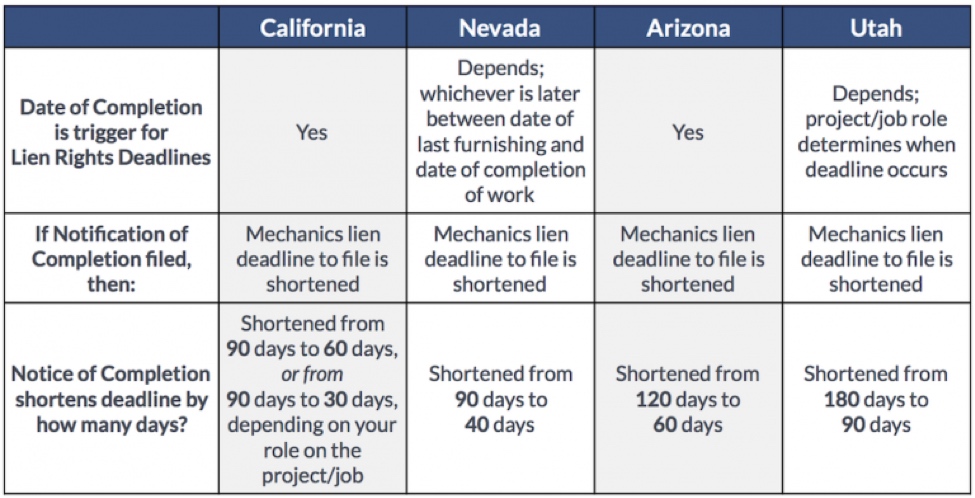Table of Contents
- The Purpose of a Project Completion Form
- Key Tip: Do Not Give Away Incentive Prematurely
- 3 Things to Do Before Signing the Project Completion Form
- Related Articles
The Purpose of a Completion Form
A project completion certificate legally indicates the conclusion of a construction contract. This is also known as a “Notice of Completion” or more commonly a “Project Completion Form”. Homeowners need to be aware of the importance of this document and the implications once it is signed. The first thing to know is to not be pressured or hurried into signing this document without conducting a thorough audit of your project’s status and all outstanding issues. Once this document is executed, the homeowner implicitly accepts that the contracted party (contractor) cannot be held liable for any uncompleted work as specified in the contract.
This also signals that the project has entered its “warranty phase”. The form should also state the exact date on which the contractor’s work ends on the project and the final payment amount due from the property owners. The certificate is issued by the party who was contracted to perform the work at the site, and is agreed to or signed by the site owner or homeowner.
Do Not Give Away Incentive Prematurely
A reputable contractor should be able to confidently submit this form for signature, as all uncertainties and outstanding issues would have been mutually resolved well in advance of this exchange. Less reputable contractors, on the other hand, may ask, as a favor, to get this form signed while final project tasks are still in motion. Do not fall for “wanting to do a good deed” when you have come so far through your project. By your not signing, the contractor will have adequate incentive to properly see through the project to your satisfaction.
In many states, completion is further defined as:
- Actual completion of the work
- Occupation or use of the work of improvement by the owner accompanied by cessation of work
- Acceptance of work by the owner
- In California, after the commencement of a work of improvement, a cessation of labor thereon for a continuous period of 60 days, or a cessation of labor thereon for a continuous period of 30 days or more if the owner files for record a notice of cessation
The completion document also serves as notification to subcontractors, or all potential mechanics lien claimants, that a construction project has been completed. The point here is to reduce the time to which claimants, subcontractors, material supplies or the general contractor, can record a mechanics lien against your property.
3 Things to Do Before Signing the Project Completion Form
Here are three important tips to follow when nearing the end of a project and before signing your Project Completion Form.
1. Complete or Resolve All Items on the Punch List
If your contractor tells you that a part has been ordered and that he will send someone in a week to follow up and make the required changes, wait until the actual work is completed and verified before you sign off on the project. If you hastily sign, you may never see the replacement part. By doing so, you will have also implicitly indicated your satisfaction with his work by signing off prematurely. Less reputable contractors can feign ignorance and state that they had assumed that all matters had been satisfactorily resolved. A prematurely signed completion form can basically serve as a “magic wand” for contractors, as it will absolve the list of any nagging issues that they were unable to adequately address. To learn more about Punch Lists, read The Importance of a Punch List for Your Home Improvement Project.
2. Complete or Resolve All Outstanding Change Orders
If your contractor is pushing you to sign off on the project completion documents, yet a change order is pending, refuse to sign. Everyone wants to claim that the projects they manage are “on time and under budget”, but if an item is “pending” the clock is still ticking. Contractors who hand over the responsibility to the homeowner, before all change orders are resolved should know that unresolved items can later become claims or legal disputes. Any outstanding change orders are tied to the originating contract, and the completion form is tied to the contract, so do not deviate from this approach.
3. If You Are Unsure Work Has Been Performed, Wait Until It Can Be Verified
If you had waterproofing completed on your deck, or a new roof installed, insist on waiting until the first heavy rainfall of the season to verify that the work as performed was completed to your satisfaction. Water tests are good, but Mother Nature is the best test, bringing wind swept, gale forced rains against a newly waterproofed decks or new roofing material. Signing documentation before verification, will work against you should you later file a claim, as your signature implies that the contractor completed the work as specified in the contract. Retain your rights as a homeowner and be sure that the work is to your satisfaction after verification.
The table below outlines the basics regarding the date of completion trigger and what happens if an owner decides to file a Notice of Completion in one of these 4 states.

Source: Levelset.com
Note: Tennessee, Massachusetts, and Alaska are also states where an owner may file a Notice of Completion.
Related Articles:
- The Importance of Punch Lists for Home Renovation Projects
- What Homeowners Should Know About Construction Warranties
- Understanding Lien Waivers: What Homeowners Need to Know
- Homeowner Rights to Post Negative Reviews Online
- The Essential Elements of a Home Renovation Contract
- Home Renovation Contracts: Costly Mistakes to Avoid







